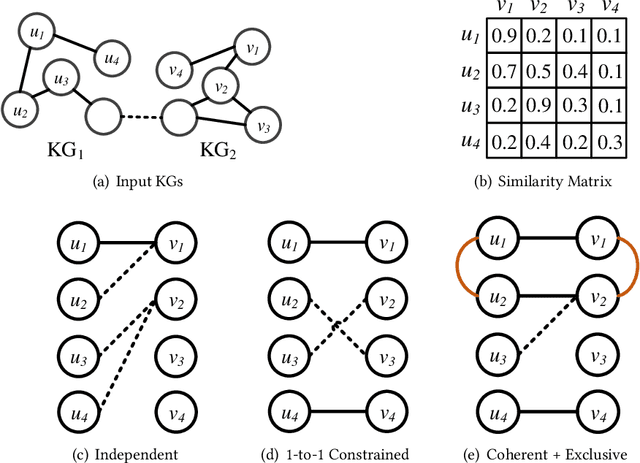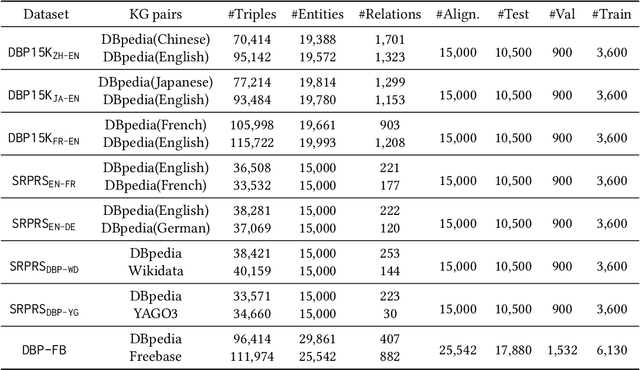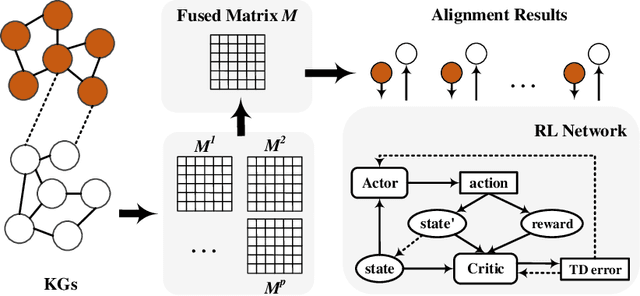Reinforcement Learning based Collective Entity Alignment with Adaptive Features
Paper and Code
Jan 05, 2021



Entity alignment (EA) is the task of identifying the entities that refer to the same real-world object but are located in different knowledge graphs (KGs). For entities to be aligned, existing EA solutions treat them separately and generate alignment results as ranked lists of entities on the other side. Nevertheless, this decision-making paradigm fails to take into account the interdependence among entities. Although some recent efforts mitigate this issue by imposing the 1-to-1 constraint on the alignment process, they still cannot adequately model the underlying interdependence and the results tend to be sub-optimal. To fill in this gap, in this work, we delve into the dynamics of the decision-making process, and offer a reinforcement learning (RL) based model to align entities collectively. Under the RL framework, we devise the coherence and exclusiveness constraints to characterize the interdependence and restrict collective alignment. Additionally, to generate more precise inputs to the RL framework, we employ representative features to capture different aspects of the similarity between entities in heterogeneous KGs, which are integrated by an adaptive feature fusion strategy. Our proposal is evaluated on both cross-lingual and mono-lingual EA benchmarks and compared against state-of-the-art solutions. The empirical results verify its effectiveness and superiority.
 Add to Chrome
Add to Chrome Add to Firefox
Add to Firefox Add to Edge
Add to Edge